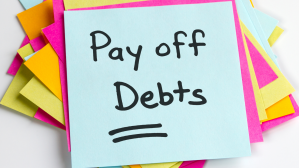
IRS scammers have been around for a long time and they’re sticking around because, unfortunately – people keep falling for their changing tactics. Knowing this, the Internal Revenue Service (IRS) annually publishes a list of tax scams coined the Dirty Dozen, in an effort to increase awareness. Here are some of the most common scams that taxpayers should watch out for year-round, but especially during tax time.
1. Someone Using Your Social Security Number to File Taxes
A scammer might attempt to beat you to the chase – that is, beat you to claiming your own tax refund. This tax scam occurs when a fraudster uses your social security number to file and claim a tax refund. Oftentimes, the first inkling that you’re a victim is if the IRS rejects your tax return once you file. There are various reasons your tax return can be rejected, but it’s a surefire sign of identity theft if the IRS has another tax return filed in your name or a record of income from an employer you don’t work for.
There are resources available to you if someone has stolen your identity and filed a tax return with the IRS. First, you should report the identity theft to IdentityTheft.gov. This government website will aid you in creating various documents, such as an IRS Identity Theft Affidavit and personal recovery plan. You should then submit your Identity Theft Affidavit to the IRS – which notifies them of your case to begin investigating it. Alternatively, you can obtain the Identity Theft Affidavit directly from the IRS and submit it by mail. Lastly, follow the steps in your personal recovery plan to help mitigate the fallout and limit the personal and monetary damages of identity theft.
2. Ghost Tax Preparers that Disappear with Your Cash
While many tax preparers act with professionalism and integrity, tax season gives rise to unscrupulous tax preparers called “ghost preparers” who misguide taxpayers in an effort to make a quick buck or disappear with their refunds. These preparers take advantage of tax credits or deductions the taxpayer doesn’t qualify for, or invent fake sources of income to entice them with fake large refunds. They falsify tax returns in an effort to maximize the amount of the refund because they often charge a “percentage fee” based on the amount of the return. The ghost preparer typically refuses to sign the return after it is prepared, allowing them to disappear with their payment and leave you to deal with the consequences of falsifying a tax return. It is best practice to avoid any tax preparer who charges a cash only fee, does not give you a receipt, or who charges a percentage of your refund as their preparer fee. In addition, one who tries to invent false income or get tax credits and deductions you aren’t qualified for, or who deposits your refund into their own account – will typically “ghost” you.
3. Email and Text Scams
Many scams impersonating legitimate organizations begin with unsolicited emails and text messages, and IRS scams are no exception. The IRS will never demand immediate payment of a tax bill and threaten consequences for not doing so via email or text message. Similarly, the IRS will never notify you of a large tax refund via email or text message. These emails and text messages may also prompt you to click links that would download malicious software on your device or steal your personal and financial information. In the event the IRS needs to contact you, communication is typically initiated through regular U.S. mail. There are exceptions to this, as well as other ways the IRS may contact you – which can be found on the IRS webpage how to know it’s the IRS.
4. Bad Social Media Advice
In an effort to increase views and generate income, some social media influencers have been known to share bad tax advice using clickbait – or content that is designed to attract attention and entice users to click. It is hard to ignore content with headlines such as “find out how this little-known tax deduction can increase your tax refund.” Additionally, some influencers will have you pay to subscribe to gain access their exclusive “tax advice” on various platforms, but they are essentially just taking your money and sending you on your merry way – with incorrect tax advice. If you interact with this content and follow their bad advice, not only will you file a fraudulent tax return – but you also encourage these influencers to continue producing misleading content.
5. Fake Tax Bill
If you receive an urgent request to pay a tax bill with gift cards, cryptocurrency, or any other unusual yet specific method of payment – it’s a fake tax bill scam. The IRS will never call to demand immediate payment or make threats if you cannot render payment. As mentioned previously, the IRS will only contact you via regular U.S. mail.
6. IRS Individual Online Account Help Scam
An individual online account through the IRS provides taxpayers with a portal to access their tax information, such as payment history and tax records. Scammers are now posing as third parties to assist with setting up these online accounts to steal taxpayers’ personal information, submit fraudulent tax returns, and take their tax refunds. The scammer may also sell the personal and financial information to other fraudsters who may file fake tax returns and steal refunds, open loans and credit accounts in the taxpayer’s name, and ultimately steal their identity. The IRS has a guide to establishing an IRS online account and avoiding scams.
First Financial knows that tax season can be hard enough, and that’s without the worry of being scammed being added into the mix. If you have any questions or reason to suspect that your information has fallen into the hands of a scammer this tax season, don’t hesitate to contact us at 732.312.1500 or visit us at your local branch.






